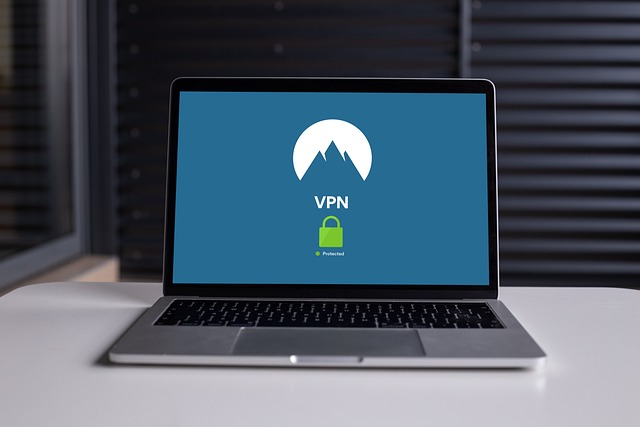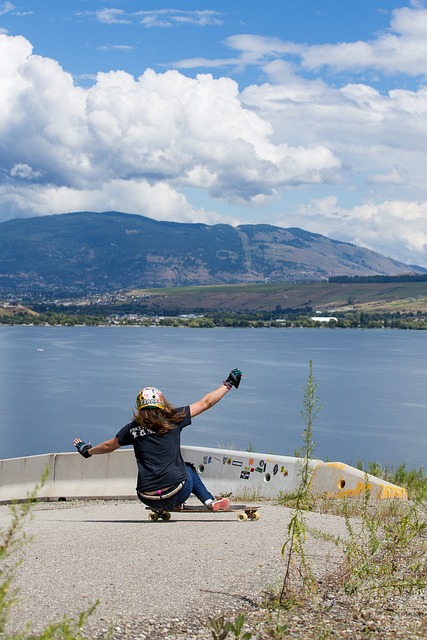For newcomers to longboarding, mastering balance is key. Choosing a 90-100 cm drop-through board with flexible yet responsive trucks and wheels tailored to your riding style enhances learning. A stable stance with the front foot slightly ahead and body weight evenly distributed allows for controlled pushes and turns. Drills like reverse walking and single-point balancing sharpen skills. Starting slow, practicing on flat surfaces, and wearing protective gear helps beginners overcome challenges, build confidence, and enjoy smooth, balanced rides.
“Unleash your inner longboarder and discover the art of balance! This comprehensive guide is tailored for beginners seeking to conquer the streets with confidence. From understanding the fundamental concept of balance, choosing the ideal board, and mastering basic stance, to advanced turning techniques and safe stopping methods—we’ve got you covered. Learn tips and tricks to navigate various terrains effortlessly, enhance your control, and build the skills needed to dominate the longboard scene as a novice.”
Understanding Balance: The Foundation for Longboarders

For longboarders, especially those new to the sport, understanding balance is the cornerstone of their journey. A longboard for beginners is an excellent tool to learn and master this fundamental skill. Balance isn’t merely about staying upright; it involves a nuanced sense of equilibrium, weight distribution, and body control. As a beginner, focusing on maintaining a central stance with even weight distribution between your feet will significantly improve your stability.
The foundation lies in adopting a relaxed yet alert posture, keeping your eyes forward, and ensuring your arms and core muscles are engaged. Regular practice sessions, starting in a controlled environment, help build confidence and muscle memory. By consistently working on balance, longboarders can gracefully navigate turns, maintain speed, and ultimately enjoy the freedom of smooth, flowing rides.
Choosing the Right Longboard for Your Needs

When selecting a longboard, especially as a beginner, choosing the right fit is paramount to enhancing your learning experience and overall enjoyment. Look for boards designed with simplicity in mind, typically between 90-100 cm in length, offering a stable platform for balancing and maneuvering. These boards often feature drop-through or drop-down designs that lower the deck, putting you in a more natural riding position and making it easier to maintain your balance.
Consider the flex of the board as well; stiffer boards provide better stability at higher speeds but may be less forgiving for beginners. Softer decks offer a smoother ride and are great for learning tricks and navigating rough terrain. Always opt for a longboard with comfortable trucks and wheels that suit your preferred riding style, whether it’s cruising, carving, or dancing on the board.
Basic Stance and Foot Placement for Beginners

For those new to longboarding, mastering a basic stance and foot placement is essential for stability and control. When first attempting to ride, keep your feet comfortable and flat on the board with the front foot slightly ahead of the back foot. This positioning provides a solid foundation, allowing you to balance more easily while also enabling a smoother transition when carving or turning.
Focusing on keeping your weight evenly distributed across both feet is crucial. Beginners often find it helpful to imagine a line running through their center of gravity, ensuring each foot bears an equal share. As you gain confidence, slightly bending your knees and keeping your body relaxed will enhance your balance further, making the longboard more responsive to your commands.
Mastering the Push: Techniques to Gain Speed

Mastering the push is a fundamental skill for any longboarder, especially newcomers to this exciting sport. It involves developing an understanding of how to generate speed and momentum while keeping your balance. For beginners, the key lies in learning the proper technique to maximize forward motion with each push, without losing control or stability.
One effective method is to focus on a smooth and controlled push, engaging your entire body from head to toe. This involves bending your knees slightly and transferring your weight forward while pushing off the ground with your back foot. By timing your pushes accurately and maintaining a relaxed yet firm stance, beginners can quickly gain speed and improve their overall longboard experience, making it an essential skill to master on a longboard for beginners.
Turning Made Simple: Controlling Your Board

For those new to longboarding, one of the most fundamental skills to grasp is turning control. It’s often perceived as a challenging aspect of longboarding, but with practice and the right techniques, it can become second nature. The key lies in understanding how your longboard reacts to pressure and leaning.
When initiating a turn, beginners should focus on applying gradual pressure with their feet while leaning slightly into the desired direction. This action will cause the board to bend, allowing for a smooth curve. It’s important to maintain control by keeping your weight distributed evenly and adjusting your stance accordingly during the turn. Longboards for beginners are designed with flexibility in mind, making it easier to learn these maneuvers.
Stopping Safely: Braking Methods for Novices

For longboard for beginners, learning to stop safely is a crucial part of mastering the art of boarding. There are several effective braking methods that can help you come to a smooth halt. One popular technique involves using your legs and feet for control. By bending your knees and shifting your weight, you can apply pressure to the board, slowing it down gradually. This method allows for precise stopping and is especially useful when navigating tight spaces or descending slopes.
When learning, practice this braking technique in a controlled environment, away from traffic and pedestrians. Start by cruising at a moderate speed and then gradually apply the braking pressure until you feel comfortable with the sensation of slowing down. Remember, the key to safe stopping is anticipation and gradual application of force, ensuring a controlled and balanced descent.
Navigating Different Terrain with Ease

Learning to navigate different terrains on a longboard for beginners is an exciting part of mastering this versatile skating tool. Whether cruising through smooth urban streets or tackling the varied surfaces of a park, adapting your skills allows for a more enjoyable and accessible experience. For novice longboarders, starting with flat, even surfaces like concrete or paved roads is ideal. This provides a solid foundation for developing balance and control before venturing into more challenging territories.
As you progress, introduce slightly uneven terrain like gravel paths or gently sloping hills to improve your ability to adjust speed and direction smoothly. Incorporating these varied environments into your practice sessions not only enhances your longboarding skills but also ensures you’re prepared to handle unexpected changes in surface during your rides.
Advanced Balance Drills for Improved Control

For those looking to elevate their longboarding skills, incorporating advanced balance drills into your routine is a game-changer. These exercises are designed to sharpen your sense of equilibrium and control, making every ride smoother and more confident. One effective drill involves walking backward along a straight line drawn on the ground—a challenge that forces your body to maintain stability while navigating in reverse.
Another engaging drill is the “weaving” technique. Set up two cones or markers several meters apart and practice weaving in and out between them, mimicking an S-shape path. This drill not only improves balance but also enhances your ability to navigate tight spaces. For a more intense workout, try balancing on a single point while pushing off with the other foot—a skill that will drastically improve your control when riding a longboard for beginners or advanced levels alike.
Tips for Building Confidence on Your Longboard

Balancing on a longboard can feel daunting at first, but with practice and the right tips, beginners can quickly build confidence. Start by choosing a board suitable for your skill level; longer boards offer more stability, making them ideal for newcomers. Wear protective gear, especially knee and elbow pads, to boost your courage and ensure a safe learning experience. Practice on flat, smooth surfaces away from traffic. Begin by pushing slowly and focusing on maintaining your center of gravity low—bend your knees and keep your body close to the board.
Learn to use your feet effectively; place them in a comfortable stance, with one slightly forward for balance. Gradually increase speed as you get more comfortable. Use your arms to help steer and slow down, keeping them loose and flexible. Regularly practice basic movements like turning and carving in controlled environments until they become second nature. Always remember to stay calm, focus on your breathing, and enjoy the ride!
